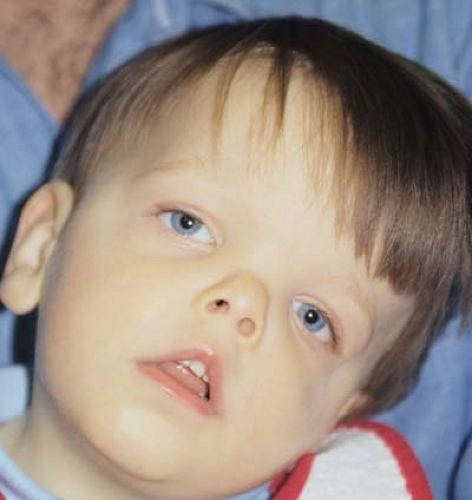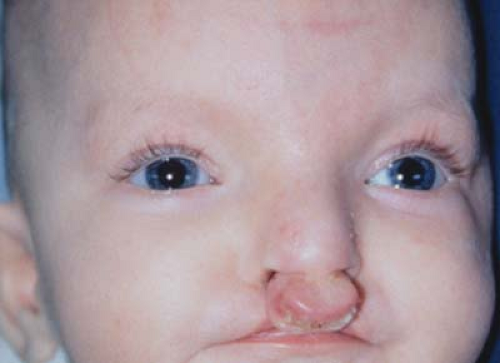Chromosomes
Nasrin Najm-Tehrani
Alex V. Levin
The genetic information in each cell is in the form of DNA, the majority of which is in the nucleus as chromosomes. A much smaller proportion of DNA is located in the mitochondria in the cytoplasm of the cell. Mitochondrial disorders are covered elsewhere in this book (Chapter 21: Neurologic). Humans have 23 pairs of nuclear chromosomes, including the X and Y chromosomes that determine gender. Reported aberrations in the human genome are extremely numerous. This chapter deals with some of the more common and recognizable abnormalities, which include:
Trisomy: A duplication (i.e., three copies rather than two) of part or all of a chromosome
Monosomy: A deletion (i.e., one copy rather than two) of part or all of a chromosome
Translocation: A rearrangement of chromosomal material such that part of one chromosome is found attached to another chromosome. If the translocation is balanced, then there may be no resulting clinical abnormalities. However, translocations may result in damage or deletion of genes, particularly at the points where one chromosome is broken or where a part of another chromosome is attached.
Other rearrangements: A wide variety of rearrangements of a chromosome (e.g., inversions, rings) can result in gene disruption and disease.
To test the integrity of nuclear chromosomes, a karyotype is performed. At a specific stage of cellular replication, chromosomes are harvested from lymphocytes (the test can also be performed on tissues such as skin fibroblasts) and stained to create banding patterns. These bands do not correspond to specific genes. Rather, each band contains many of the approximately 35,000 human genes. Therefore, a cytogenetically visible chromosomal aberration almost always means that more than one gene has been disrupted. As a result, the patient will usually have more than one abnormality, one of which often is developmental delay. A normal karyotype does not rule out disease, as there can still be a submicroscopic aberration (e.g., microdeletion) or a molecular change within a single gene.
This chapter focuses on the systemic manifestations of chromosomal aberrations, as many of the individual ocular manifestations (e.g., coloboma, cataract) are otherwise generic and featured elsewhere in this atlas.
 Figure 13.3 Deletion 11q (Jacobsen Syndrome) The critical deleted region for the development of Jacobsen syndrome is 11q23.3-24.1. Ocular abnormalities most commonly associated include telecanthus and/or hypertelorism, ptosis, epicanthal folds, and strabismus. Less common ocular abnormalities are coloboma with or without microphthalmia, nuclear cataract, abnormal eyelashes/eyebrows, iris discoloration, microcornea, nasolacrimal duct obstruction, amblyopia, and exotropia with anomalous extraocular muscles. Patients often have growth and mental retardation, craniosynostosis, abnormal facies, thrombocytopenia/pancytopenia, and, less commonly, congenital heart malformations and hand/foot anomalies.
Stay updated, free articles. Join our Telegram channel
Full access? Get Clinical Tree
 Get Clinical Tree app for offline access
Get Clinical Tree app for offline access

|

